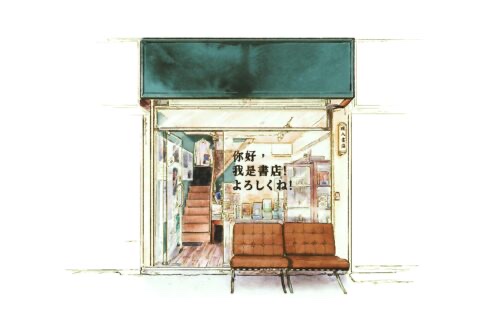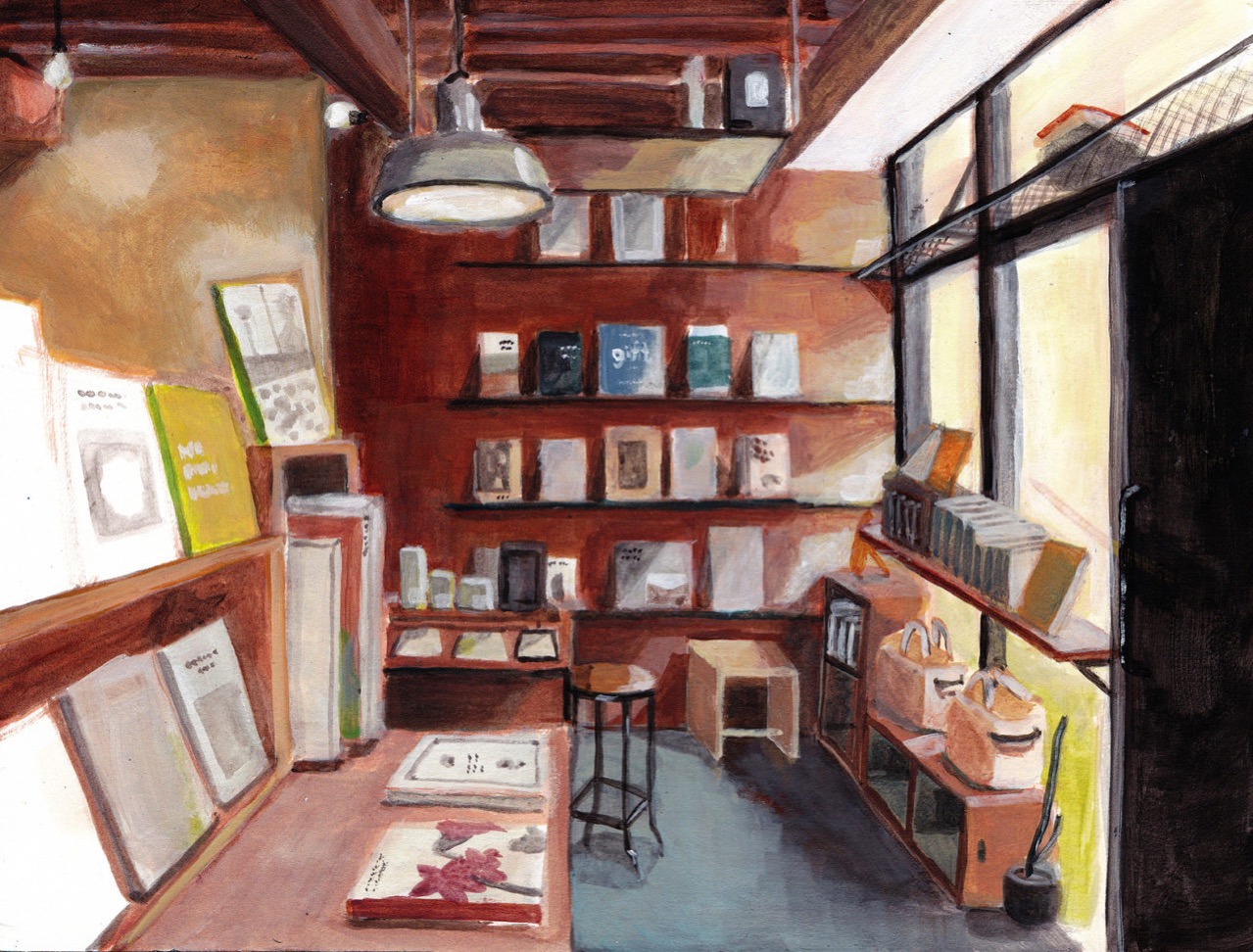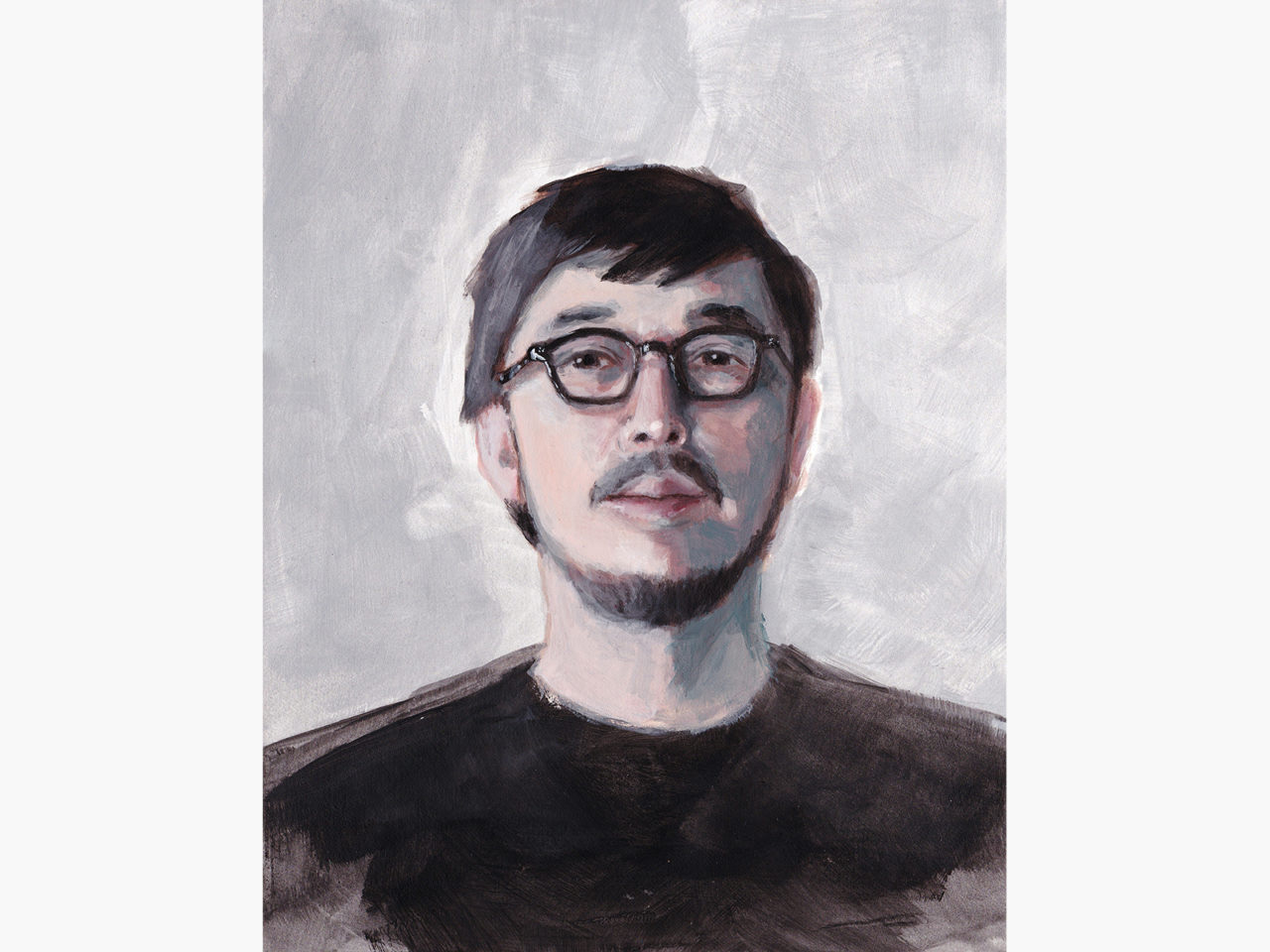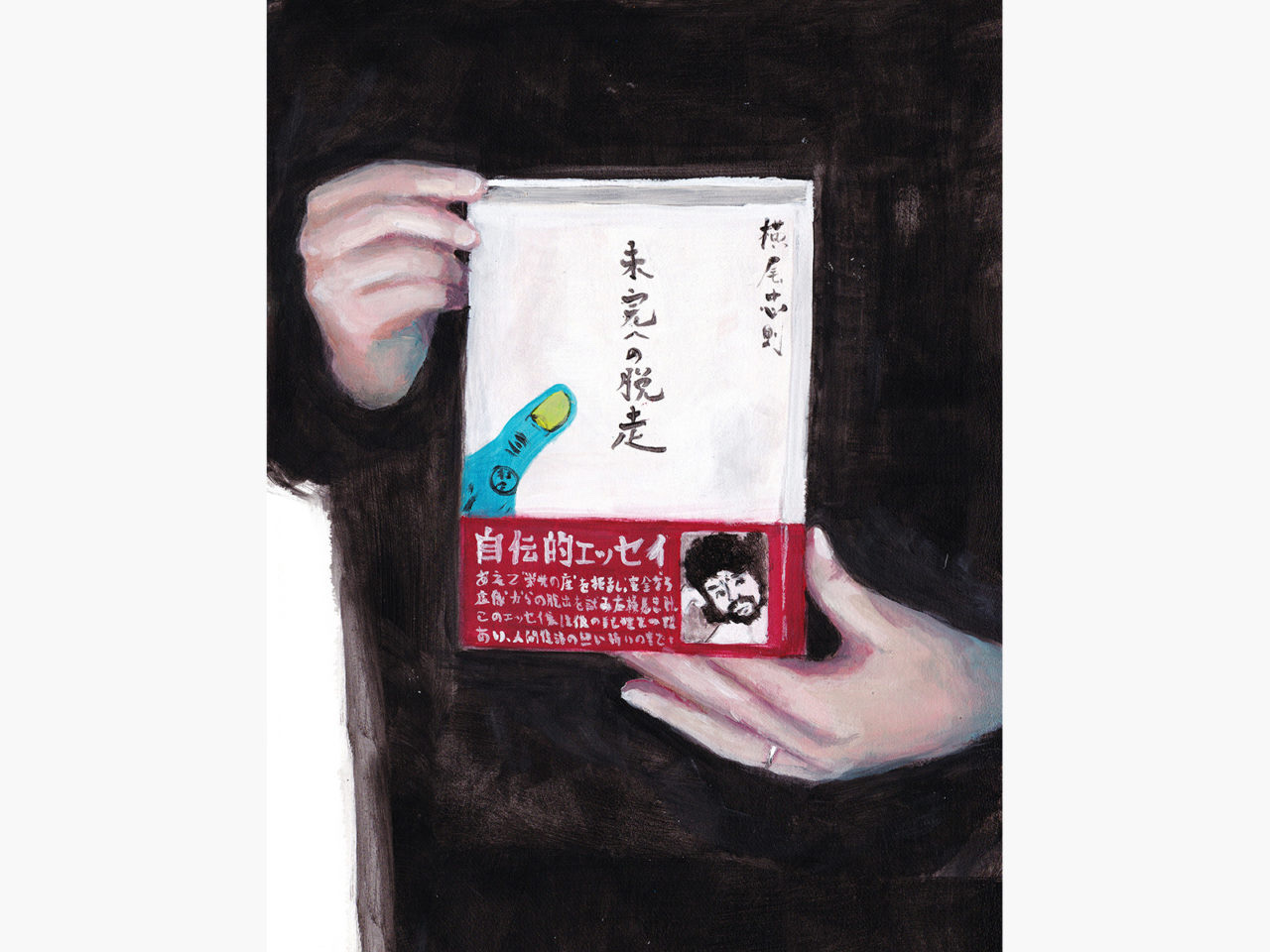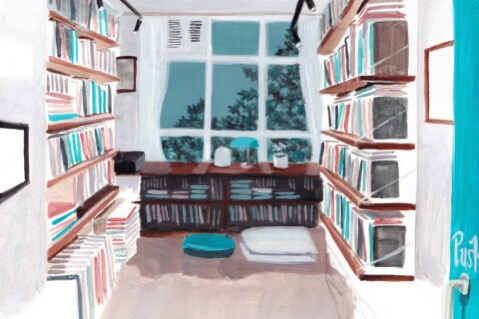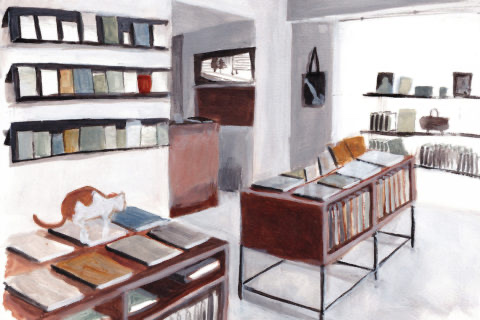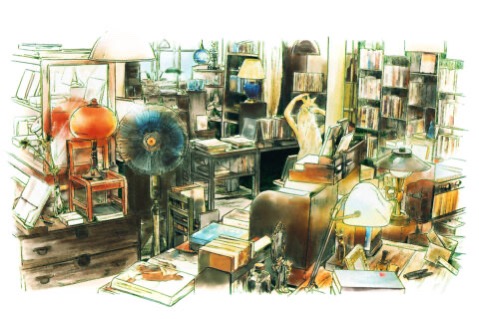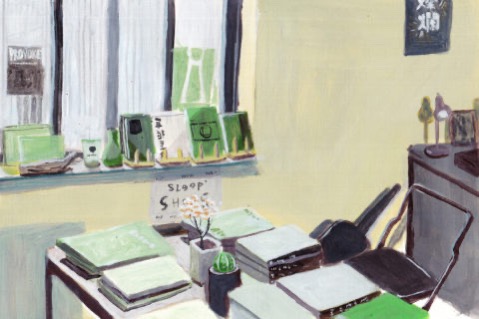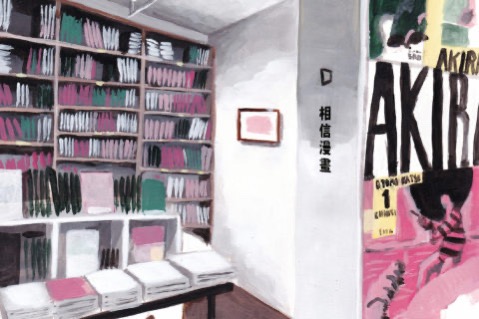每次拜訪一家書店,看書,看人以及看書店本身。店主準備怎樣的書籍予客人,客人如何從藏書和擺設,讀出店主本身的個人品味。書店裡佈滿人們活動的軌跡,是觀察人類的最佳場所。
A visit to the bookshop is not only about looking at books, it is also about looking at the other customers, staff, and the bookshop itself. The kind of books the bookshop sells and how it is decorated tells you something about the shopkeeper’s personal taste. With so many people coming and going, and so many personal stories being created day and night, a bookshop is one of the best places to observe the lives of others.
I don’t want to create a nostalgic feeling that everything in the good old days is perfect. I want my bookstore to be a place where people are inspired to discover something new.
「Nostos」是古希臘文學中常見的主題,中文可以解作「還鄉」,這當然不止是回鄉的意思,而通常指英雄在不得已下情況下流落異地,經歷誘惑和苦難,終於回到故鄉之際,也恢復了原有的身份和秩序;當中既有回歸的企圖,但也包含了克服和超越的過程。而在搞懂這個字眼的意思後,就不難懂得為什麼nostos books會把經營概念定作為「發現新的過去」(新しい過去の発見),而不是「過去的新發現」(過去の、新しい発見)。
與現今書店的經營軌跡相反,當大量實體書店都退守或轉戰線上業務時,nostos books卻是先從線上書店起家,直至2013年才發展成實體書店。而雖然官網中介紹寫到,他們是一家主力販售六十至八十年代舊書的書店,涉獵範圍由美術到建築,商品和字體等設計類主題的書籍。但實際到店裡後你又會發現許多書以外的商品,像是Postalco的生活用具;東京香堂的線香和香座;辻有希的木工藝術擺飾,以及Aji Project的庵治石書立等商品。
在2017年時書店甚至親自出面,聯乘包袋品牌raregem推出「Magazine Bag」雜誌包,不僅在本土受歡迎,國外的訂單也絡繹不絕,不少外國人也因此認識了nostos books這家書店。而這些被店主稱為「書籍旁邊的東西」的商品,就與老書本一起構成了nostos books的性格,也定調了他們不會是一般意義下的書店。
Nostos is a theme that was commonly used in Ancient Greek literature. While the word itself means “returning to the homeland”, a nostos narrative usually includes an epic hero being forced to leave the homeland, and in order to return home to reclaim his honor and status, the hero has to go through a treacherous journey that is filled with temptation and suffering. A nostos journey is not merely a homecoming journey but a transcendent experience to the returning heroes. With some understanding on the background of nostos, it is not too difficult to understand why nostos books vows to inspire readers to “discover new perspectives on the past” (“新しい過去の発見”) rather than simply discovering the past (“過去の、新しい発見”).
While physical bookstores are either closing down or switching to online business, nostos books started out online before opening a physical space in 2013. As stated in their official website, nostos books specialises in secondhand books on art, architecture, and design from the ’60s through to the ’80s, but in fact, they also sell other merchandise such as everyday objects from Postalco, incense sticks and holders from Tokyo Kodo, Aki Tsuji’s woodwork, and Aji Project’s Aji stone bookstand.
In 2017, nostos books collaborated with raregem to launch a “Magazine Bag” which became an instant hit in local Japan and garnered much attention from overseas. These “items sitting next to the books”, as nostos books’s owner called them, together with the carefully curated book selection, have given a distinctive and unique character to nostos books.
OBSCURA:nostos books位處在一個怎麼樣的社區?來客都是什麼樣的人呢?
中野:nostos books位於東京世田谷區的松陰神社前。顧名思義,是在前往神社路上必經的商店街裡。書店實際座落在一幢保留了老式氛圍的建築裡,裡頭有許多新的、舊的商店。由於我們代理的產品類型,有許多客人都是創作者,例如是設計師或藝術家,以及具有這種品味的人士,不過因為書店位於購物區,所以也有很多隨機進店的路人。
OBSCURA:現在大部分書店都慢慢開發線上業務,但nostos books卻是倒過來,從一間線上書店變成實體書店。你覺得在這兩者各自的優點是什麼?各自的限制又是什麼?
中野:線上店的優點大概是沒有資訊量的限制吧。相對而言,也可以說是限制了,難以傳達的觸感和氣味等依賴五感的東西。實體店的優點是,能夠利用全部五感去營造店內的氛圍。而限制則是受地方大小所限,選擇有多少有所局限。
OBSCURA:我很喜歡nostos books的介紹頁面裡寫說的「發現新的過去」(新しい過去の発見),你是從什麼時候有這份體悟。
中野:經過三次更改,才改成現在的這個概念。雖然多番轉折,但終於在兩年前調整成現在這個模樣。開店時我就已經認為,書店的概念是十分重要的,幸好現在有了「發現新的過去」這句概念,店內的商品才不會顯得再模糊不清。重點是「新過去的發現」,而絕非「過去的新發現」!我並非想為書店營造一切舊事物俱佳的懷舊感覺,而是想書店本身可以促使一個人有自己的發現。
OBSCURA:nostos books其中一個重點,就是會賣許多非書的商品,你好像在以前訪問時,也說過書店會賣「書籍旁邊的東西」,可以多闡述一下你的看法嗎?
中野:現時的作家和品牌,究竟是如何解讀過去,從而令作品(商品)誕生的呢?我的想法是要將(也許)能帶來啟發性的書藉並列出來,從而令觀者自己能夠獲得「新過去的發現」。雖然它們的表現方式看起來可能是相異的,但思維方式的相同的情況也很多,實際上(這些共同思維)並不受時代與國界所限,而我也希望可以促使這樣的發現。
OBSCURA:如果店裡有近一半的商品都不是書,那還能不能叫做一家書店呢?會不會反過來叫,會同時賣書的一間生活用具店?在這個世代,是不是越來越難去定義「書店」呢?
中野:我自己對「書店」並有沒有特別心存什麼憂患意識,亦沒有想過要為書店下一個定義。恕我再三重覆,對我來說,「與概念相不相符」這一點十分重要。
雖然中野先生不慍不火,耐著性子地回答每個問題,但隱約間還是能感應到他的稜角。例如明明是一家販賣舊書的書店,他卻說:「我並非想為書店營造一切舊事物俱佳的懷舊感覺⋯」以及作為書店店主,對書店本身卻沒有所謂的憂患意識,更沒有對書店的固有定義。感覺起來,書店之於他似乎更像一個中性的載體,一個實現自己的想法載體。而真要歸納起來的話,「不想輕易落入俗套」似乎是他的一個強烈特徵。
OBSCURA: Could you describe the neighborhood where nostos books is situated? What kind of visitors do you usually have?
NAKANO: nostos books is located right in front of the Shoin Shrine in Setagaya, Tokyo. Basically, everyone who visits the shrine will have to pass by our store. In the renovated old building where we are housed, there are many other shops. Some of them are new, and some of them have many stories behind. Because of our selection of books and merchandise, we attract a lot of designers, artists, and the like. But since we are in a shopping area, we also have a lot of random walk-in customers.
OBSCURA: Nowadays, a lot of bookstores are going online. But nostos books is, however, going the opposite way — transforming from an online bookstore to a physical bookstore. What do you think are the pros and cons of online and physical bookstores?
NAKANO: The good thing about online bookstores is that there are no restrictions on the amount of information flow. Yet, at the same time, there is no exchange of sensory information, which means, people can’t touch and feel anything. In a physical store, customers can make use of all their five senses to really engage in the book-shopping experience. The drawback of a physical store is that there is a limitation in physical space which limits our book and merchandise selection.
OBSCURA: I really like what’s on the front page of your store’s website — “Discover New Perspectives on the Past” (新しい過去の発見). Where did that notion come from?
NAKANO: The concept came into shape two years ago. It went through three rounds of review and changes. I knew that it’s important to have a concept when I first started my bookstore. I’m glad the idea of “Discover New Perspectives on the Past” came up. It defines nostos books and reflects our vision to inspire people to discover new perspectives on the past, rather than simply discover the past. I don’t want to create a nostalgic feeling that everything in the good old days is perfect. I want my bookstore to be a place where people are inspired to discover something new.
OBSCURA: Non-book merchandise is a main feature in nostos books. I came across an interview of yours in which you said you’d sell “items sitting next to the books”. Can you elaborate more on that?
NAKANO: I wonder how writers and brands interpret the past, and eventually incorporate their interpretation into their work (or merchandise). I want to put those books that are (perhaps) inspiring side by side so that readers are inspired to discover new perspectives from them. Although the narratives in these books might be different, the authors often share similar perspectives. In fact, (these similarities) is not restricted by time or national boundaries. I want to inspire people to discover these new perspectives.
OBSCURA: Should we still call it a bookstore if nearly half of its merchandise is non-book items? Should it be called a daily goods store that sells books instead? Do you think it’s getting more difficult to define a bookstore nowadays?
NAKANO: I don’t really have a sense of crisis about the survival of bookstores, and I’ve never thought of giving a definition to “bookstore” either. But I want to emphasize that it is indeed very important for a bookstore to operate in line with its principle or concept.
Although Mr. Nakano sounds indifferent, I could still vaguely get a sense of his personality from his answers to my questions — for a bookstore that specialises in secondhand books, he claims that he doesn’t “want to create a nostalgic feeling that everything in the good old days is perfect,” and as a bookstore owner, he has no sense of crisis about the survival of bookstores, and let alone, a definition of bookstore. It appears as if the bookstore is a medium for him to materialize his thoughts and beliefs. If I really have to draw a conclusion, I’d say “not wanting to fall into stereotypes” is one of his strong character traits.
OBSCURA:你本人有甚麼興趣呢?喜歡聽什麼音樂?看甚麼電影?休假日通常會去哪?
中野:我沒什麼說得上嘴的愛好,但是我以前在樂團待了很長一段間間。我喜歡的音樂種類是Hardcore和Emo。電影方面,我比較喜歡基於真實人物、真實故事改編的電影。我喜歡在休假的時候專程去公共澡堂。
OBSCURA:想知道你在長大的地方是怎樣,小時候的你是一個怎麼的人?年輕時候有過甚麼理想呢?
中野:我在一個小鎮長大,既不算鄉下但也不是市區,就是一個非常普通的小鎮。我擅長運動,小時候的夢想是成為一名職業棒球選手。
OBSCURA:那你最後是怎麼會走上開書店這條路?
中野:經營書店之前,我從事過設計工作,而開始線上書店和店舖是為了可以有一個實驗場來觀察客人由開始到購買整個過程的一舉一動。開始後,出乎意料之外行不通的事情層出不窮,所以感到頗為有趣。
OBSCURA:如果你沒有開書店,你覺得現在會過著怎麼樣的生活?就像在想像平行世界的另一個自己,他到底會幹嘛呢?
中野:假如回到開書店前的十字路口,我想我應該會繼續樂團的活動。
OBSCURA:你以後又希望過怎麼樣的人生?
中野:未來我想過一種更貼近自然的生活。
說實話作為一家舊書店的老闆,中野貴志著實太時髦了,臉上留著修剪整齊的落腮鬍,穿著樸素的深色系服飾,近年還戴上一副不方不圓的,與臉型剛好匹配的黑框眼鏡。看他站在書架前安定自若的表情,今天到底會推薦什麼厲害的書給我們呢?
OBSCURA: What are your personal interests? What kind of music do you like? How about movies? Where do you usually go during holidays?
NAKANO: I don’t have any hobbies, but I did spend quite some time in a band before. I like Hardcore and Emo music. For movies, I prefer something that is based on real life and real stories. On my day off, I’d make special trips to the public bathhouse.
OBSCURA: What was it like where you grew up? What kind of person were you when you were a kid? When you were young, what did you dream you’d become?
NAKANO: I grew up in a small town which is neither a countryside nor a city. It’s just a very ordinary town. I was good at sports, and I dreamt of becoming a professional baseball player.
OBSCURA: Then how did you end up opening a bookstore?
NAKANO: I used to work in the design field. I opened my bookstore because I wanted to have a venue in which I can observe the buyer’s journey. There are so many unexpected things that have happened since the bookstore started, but I think it’s quite an interesting experience.
OBSCURA: What would your life be if you never opened a bookstore? Can you imagine what would “you” be in the parallel universe?
NAKANO: If I can go back in time, I think I will continue to make music with my band.
OBSCURA: What kind of life do you want to live in the future?
NAKANO: I want to live a life closer to nature.
To be honest, as the owner of a secondhand bookstore, Takashi Nakano is way too fashionable — a neatly trimmed beard, dark plain clothes, and a pair of glasses with a black frame that matches so well with his face. As he gracefully stands in front of the bookshelves, I wonder if he has a cool list of books to recommend.
OBSCURA:你選書的標準大概是什麼?被你選上架的書,會不會有甚麼共通的特徵、元素?
中野:設計和藝術同樣地,如果能夠以50、100年等長時間的框架去理解的話會很有意思。雖然人物、國家和年代之間的差異是很重要,但我更希望把發現他們思考上的共通點的過程,這有趣的一面傳播開去。而書架上的陳列也往往有在考慮這一點。
OBSCURA:最後想請你給我們推薦一本書,想你略談一下書的背境,以及推薦它的理由是?感謝你。
中野:《逃向未完成》(未完への脱走)橫尾忠則
剛好是開店時讀過這本書,令我銘刻於心。身為平面設計師的他,在事業巔峰時作過引退和畫家宣言,在書中留下「對完成這件事沒有興趣」和與「經已完成的作品一個也沒有」等話語,教我深深感動。我喜歡「向未完成邁進」這個想法,對我的影響很深。
OBSCURA: What are your criteria in curating books? Are there any common features or elements in those books that are on your bookshelves?
NAKANO: If you study a subject on design or art over a time span of 50 to 100 years, you’ll find that even though the protagonists and background settings such as country and time period vary, there might be similarity in the authors’ way of thinking. I want people to discover this interesting fact. So that’s what I’d take into consideration when I curate books.
OBSCURA: Lastly, could you recommend a book to us and give us a little background about it? Thank you.
NAKANO: Escape to the Unfinished (未完への脱走) by Yokoo Tadanori. I read that book when my bookstore was first opened. It impressed me a lot. Tadanori retired from graphic design at the peak of his career, and devoted himself exclusively to painting. There are some sayings in the book that inspired me the most, such as “I have no interest in completing this project” and “I don’t have any completed works.” I am inspired by his idea on “moving towards the unfinished.”
